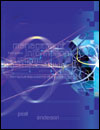One of the original purposes of computers was to make it easier to perform basic tasks. Over
time, as computers have become more powerful, they have come to support increasingly
complex tasks. Today, in addition to increasing efficiency, computers can help you make
better decisions. One major change is in the type of data routinely processed. The five major
types of data are: numbers, text, images, sound, and video. To handle more sophisticated
data and more difficult tasks, computer hardware and software have grown increasingly
complex. To choose a computer that best meets your needs, you must evaluate the four basic hardware
components: input, processor, output, and secondary storage devices. Each component
is measured by slightly different characteristics. Input devices are selected based on the specific
task (such as a keyboard for typing, mouse for pointing, or a microphone for voice
input). Processors are often selected based on speed and price. Output device quality is appraised
by resolution and color capabilities as well as initial and ongoing costs. Secondary
storage is evaluated based on speed, capacity, and price. Although computer hardware and software are becoming more complex, operating systems
are being improved to make them easier to use. Through graphical user interfaces and
standardized menus, operating systems make it easier to use common applications. When
choosing an operating system, you should also evaluate its ability to run several applications
at once (multitasking). Application software is the primary source of improved productivity. Packages exist to
assist in research, analysis, communication, and organizing resources. Database management
systems are used for research and data sharing. Spreadsheets and other analytical tools
assist in calculations. Word processors, desktop publishing, drawing packages, voice mail,
and e-mail are used for communication. Electronic calendars and scheduling software are
used to help organize human resources. There are hundreds of other software applications
for specific tasks, but most people begin with these basic tools. |




 2003 McGraw-Hill Higher Education
2003 McGraw-Hill Higher Education